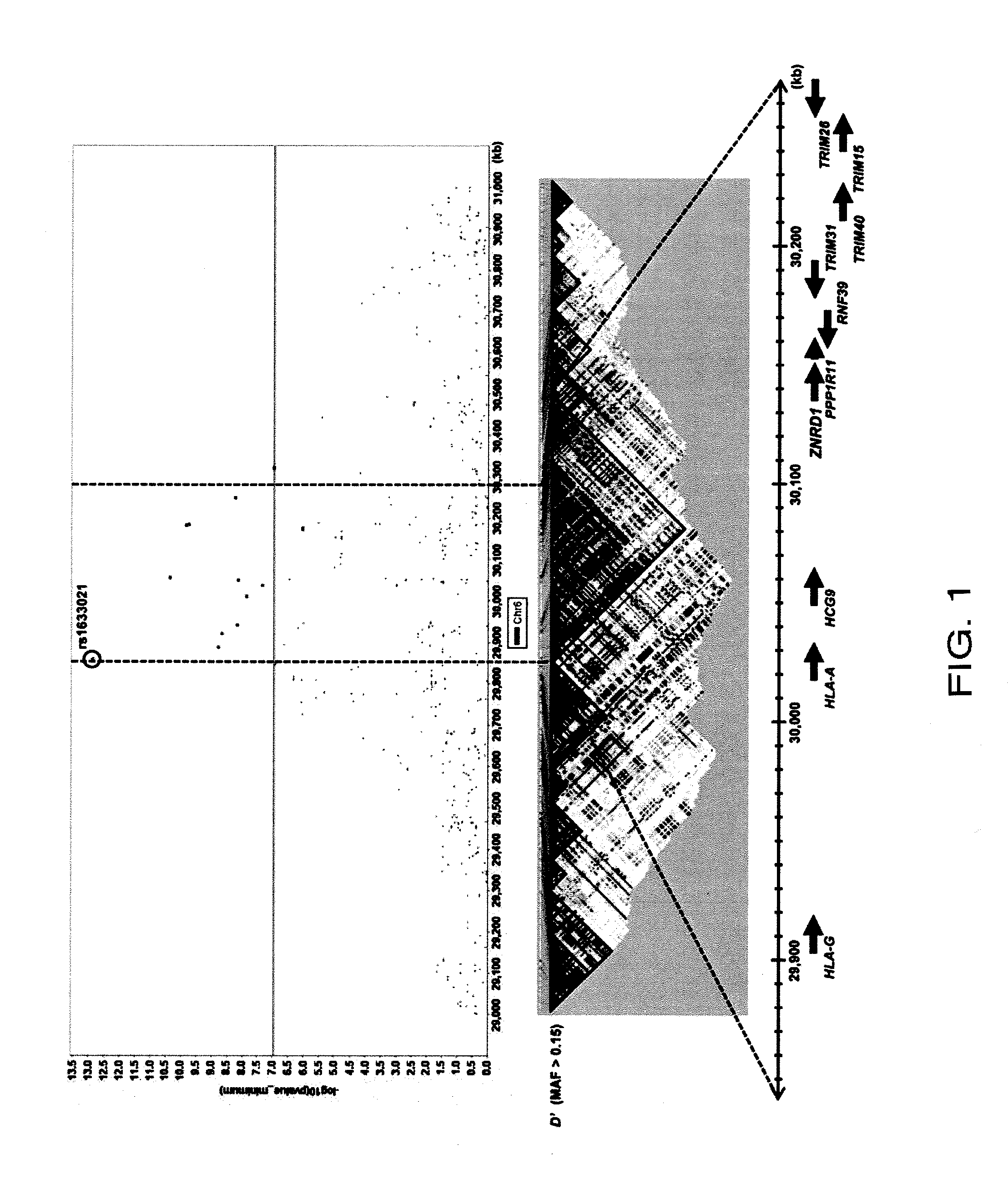Method for diagnosing drug eruption risk induced by antiepileptic drug based on single nucleotide polymorphism in 21.33 region of short arm of chromosome 6
a single nucleotide polymorphism and antiepileptic drug technology, applied in the direction of drug composition, dermatological disorder, library member identification, etc., can solve the problems of unclarified pathogenic mechanism, inability to statistically demonstrate the association between the two, and the inability to use alleles as useful genetic factors
- Summary
- Abstract
- Description
- Claims
- Application Information
AI Technical Summary
Benefits of technology
Problems solved by technology
Method used
Image
Examples
examples
[0067]The present invention will now be described in more detail. However, the present invention is not restricted to these Examples.
(1) Identification of SNPs Associated with Drug Eruption Risk induced by Carbamazepine (CBZ)
[0068]In order to identify genetic polymorphisms which determine drug eruption risk induced by CBZ, a genome-wide association study (GWAS) was carried out using Japanese subjects, and, based on the obtained results, analysis of the genotype at the HLA-A locus and a replication study were carried out. GWAS is a genetic statistical method for searching genetic polymorphisms involved in phenotypes such as diseases. Genetic polymorphisms associated with a disease can be discovered by, for example, using SNPs at several hundred thousand to one million sites covering the whole human genome to statistically test whether or not there are differences in the frequencies of the polymorphisms between patients suffering from the disease (cases) and subjects who are not suffe...
PUM
| Property | Measurement | Unit |
|---|---|---|
| Fraction | aaaaa | aaaaa |
| Fraction | aaaaa | aaaaa |
| Fraction | aaaaa | aaaaa |
Abstract
Description
Claims
Application Information
 Login to View More
Login to View More - R&D
- Intellectual Property
- Life Sciences
- Materials
- Tech Scout
- Unparalleled Data Quality
- Higher Quality Content
- 60% Fewer Hallucinations
Browse by: Latest US Patents, China's latest patents, Technical Efficacy Thesaurus, Application Domain, Technology Topic, Popular Technical Reports.
© 2025 PatSnap. All rights reserved.Legal|Privacy policy|Modern Slavery Act Transparency Statement|Sitemap|About US| Contact US: help@patsnap.com

